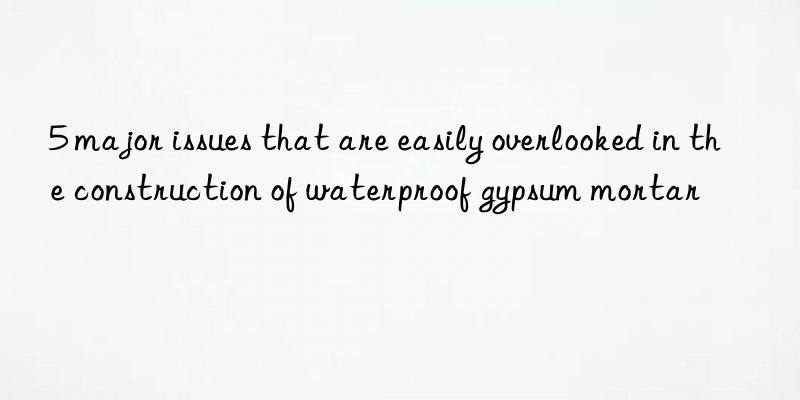
The anti-seepage of exterior walls is one of the important issues that need to be solved urgently in today’s building construction. Various new wall materials (such as concrete hollow blocks, aerated concrete blocks, etc.) are widely used, but new wall materials generally have the disadvantage of poor impermeability. Therefore, effective measures must be taken to prevent leakage in building exterior walls. In the construction of exterior walls of high-rise buildings, quality problems such as cracks, cracks, hollowing, and shedding of waterproof gypsum mortar layers caused by improper construction operations can be summarized as follows: 1. Layered scraping is not carried out as required
Under normal circumstances, according to the construction requirements of waterproof gypsum mortar, scraping should generally be carried out in 2 to 3 times. However, in order to make progress, construction units often use one-pass survival coating. Construction method.
2. The base layer is not treated as required
The outer frame pipe holes and holes are not blocked several times from the inside to the outside; there is dust and dirt on the wall surface; the wall is too dry , not fully moistened. When scraping is applied under such conditions, the moisture in the mortar will be quickly absorbed by the base layer, which will inevitably affect the strength of the waterproof gypsum mortar.
3. The proportion of waterproof gypsum mortar is incorrect
The construction is not carried out according to the gypsum mortar proportion required by the design and specifications. The waterproof gypsum mortar cannot fully exert its performance and is waterproof and crack-resistant. Problems arise.
4. Add water after the mortar has hardened and use it
Waterproof gypsum mortar stipulates that the prepared mortar must be used up within 45 minutes, and water must not be added after the mortar hardens and used again.
5. Poor maintenance after construction
After the waterproof gypsum mortar hardens, it needs to be sprinkled and cured. After construction, the layer is exposed to the air for a long time and is affected by temperature differences and air drying, causing the gypsum mortar surface layer to shrink and crack. </p



 微信扫一扫打赏
微信扫一扫打赏
